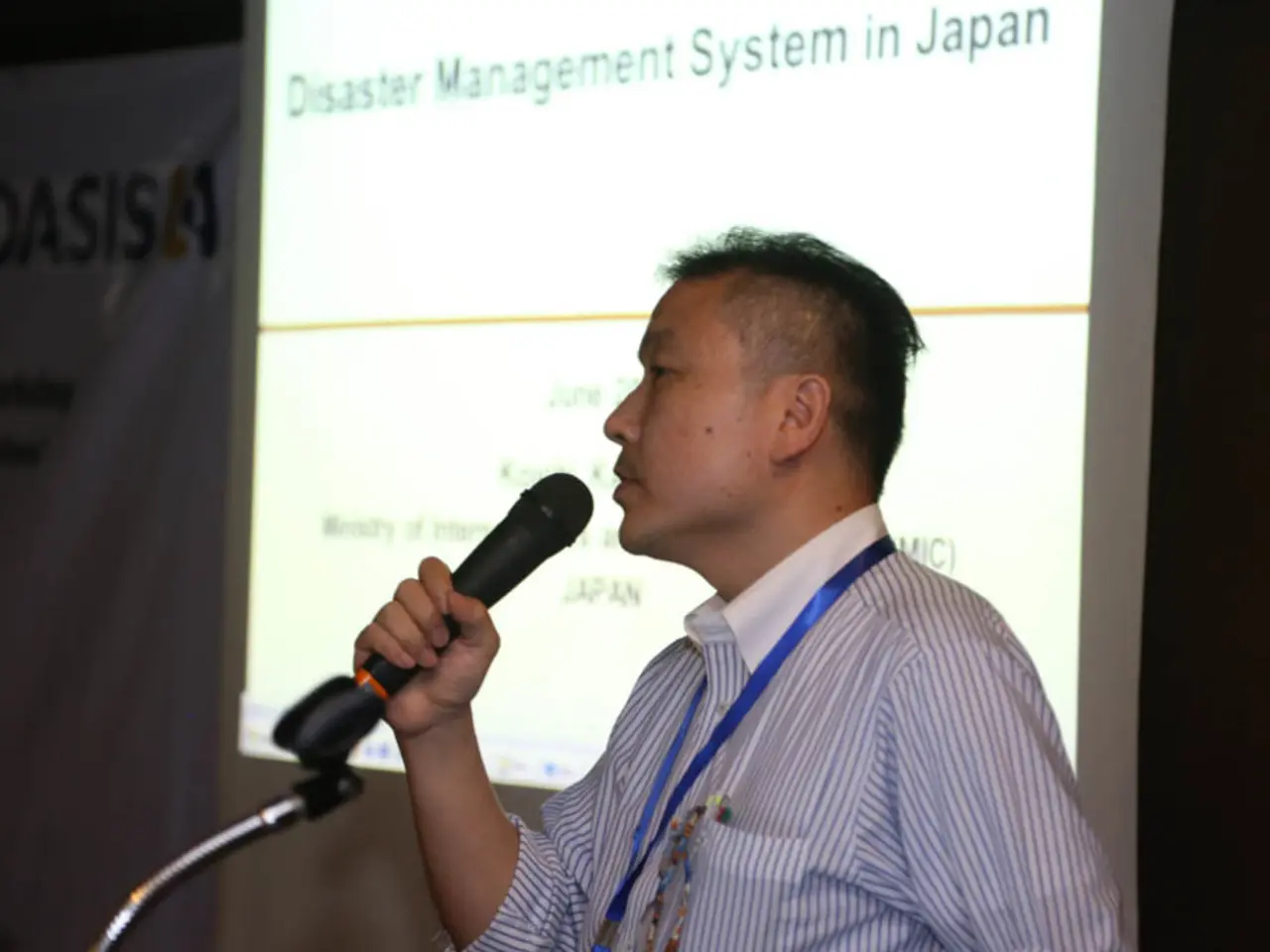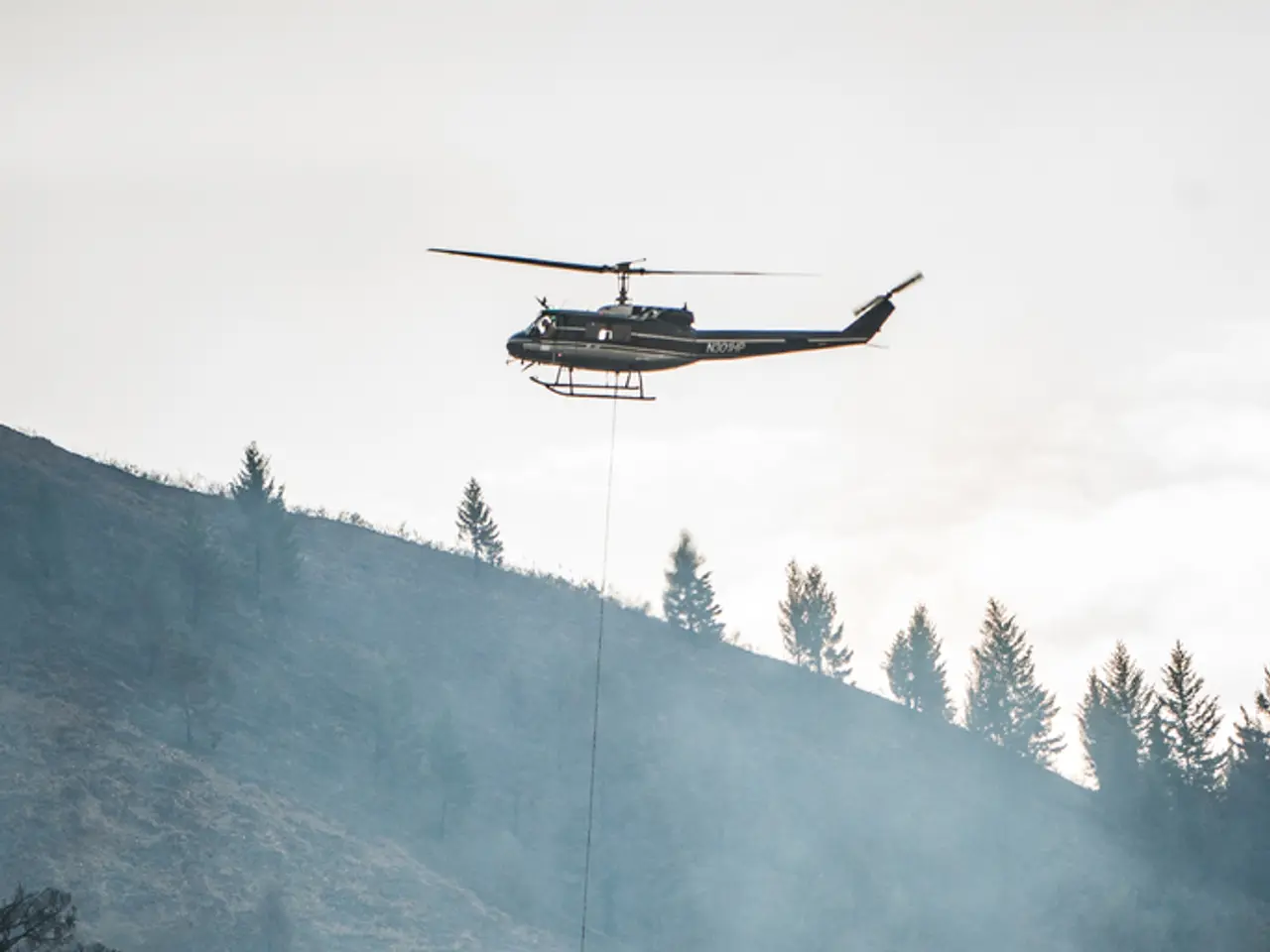"Japanese Baba Vanga's Earthquake Tsunami Prediction Seems to Materialize with the Kamchatka Catastrophe in July 2025"
In the summer of 2025, the world watched as Japan faced the aftermath of a significant event - the massive Kamchatka earthquake off Russia's Kamchatka Peninsula on July 30. This 8.8-magnitude megathrust event triggered tsunami waves that reached Japan, particularly affecting its northern regions.
This real disaster coincided with a prophecy made by Japanese manga artist Ryo Tatsuki in 1999, often referred to as the "Japanese Baba Vanga" due to her claimed clairvoyance. In her manga "The Future I Saw," Tatsuki predicted that the seas around southern Japan would "boil" on July 5, 2025, implying a major tsunami or coastal disaster.
Although no major earthquake struck exactly on July 5, the powerful Kamchatka earthquake and the ensuing tsunami about 25 days later have prompted many to consider the prophecy as broadly accurate or referring to July as a whole rather than a precise day. The Japan Meteorological Agency and experts emphasize that earthquakes cannot be forecast with exact times or locations, and the tsunamis generated waves of around 40 centimeters at coastal sites in Japan.
The connection between the 2025 Kamchatka earthquake and tsunami and Tatsuki's prophecy has sparked a debate. Some perceive the events as a delayed but tangible fulfillment of the prophecy, while official sources reject the notion of exact prediction, and the prophecy's timeframe remains vague and open to interpretation.
This episode serves as a teachable moment, not just for improving understanding of seismic science, but also for emphasising the importance of emergency protocols. Social media platforms played a significant role in amplifying the "Japanese Baba Vanga earthquake tsunami" narratives, highlighting the need for science-led outreach, especially in regions susceptible to rumor-driven panic.
The seismic activity in Japan was not limited to the Kamchatka earthquake. From June 25 to July 4, chains of over 1,198 earthquakes shook Japan's remote Tokara Islands, culminating in a magnitude-6 tremor on July 4. Thirty-one residents sought evacuation during the early July tremors near Tokara.
Despite these events, Japan continues to advance tsunami modeling and early warning systems. The ultimate test will be whether faith in science can hold firm against sensational narratives and whether the world can learn from coincidence, rather than fear it. Public preparedness remains critical, especially in anticipation of elevated anxiety each July.
In the aftermath of these events, the Japan National Tourism Organization (JNTO) confirmed steady overall inbound figures but flagged the localized downturn from Hong Kong as anomalous and tied to prophecy-driven fear. JNTO and Japanese authorities may need targeted campaigns to rebuild confidence, particularly in Hong Kong and Southeast Asian markets.
Ayaka Ebita, director of the JMA's Earthquake and Tsunami Observations Division, emphasized that coincidences should not be interpreted as proof and urged public trust in empirical science. The JMA declared predictive narratives linking earthquakes and scientific reality as hoaxes. The seismic swarm near Tokara Islands in early July 2025 was linked to normal seismic activity rather than confirmation of prophecy.
As we move forward, it is essential to remember that science, not sensationalism, should guide our understanding and response to natural disasters. The 2025 Kamchatka earthquake and tsunami serve as a reminder of the power of nature and the importance of preparedness, both in terms of physical infrastructure and public understanding.
- The scientific community remains troubled by the correlation drawn between the 2025 Kamchatka earthquake and Tatsuki's prophecy.
- In light of the events, the need for proper science education and awareness has become more apparent.
- The Japanese government, through the Ministry of Health, Labour and Welfare, has announced a focus on health-and-wellness initiatives to help the population cope with stress and anxiety following the disaster.
- The renewable-energy industry sees this as an opportunity to promote sustainable alternatives to oil-and-gas, reducing the nation's reliance on fossil fuels and lessening the risk of climate-change related disasters.
- Japan's manufacturing sector has been forced to prioritize resilience and disaster recovery plans in response to the earthquake and tsunami.
- Mental-health professionals are bracing for an increased demand for their services, with this disaster being a stark reminder of the importance of taking care of one's health.
- With the ominous events of 2025, the need for reliable weather forecasting has never been greater, as accurate predictions can help reduce the risk of future disasters.
- The environmental-science sector is working closely with the government to assess the impact of the earthquake, tsunami, and subsequent recovery efforts on the country's ecosystems.
- Finance and banking-and-insurance institutions have a crucial role to play in aiding the recovery process and helping people rebuild their lives.
- Japan's industry is exploring technological innovations to improve energy efficiency and adapt to a changing climate.
- The 2025 disaster has served as a call to action for diversity-and-inclusion efforts in leadership roles, especially in disaster-prone areas.
- The auto, manufacturing, and transportation industries are collaborating to develop safer, more resilient vehicles and infrastructure for Japan.
- Smaller businesses have been hit particularly hard by the tsunami, with many local retail establishments struggling to recover.
- Public-transit systems have been instrumental in ensuring the mobility of people during the recovery process, showcasing the importance of robust transportation infrastructure.
- The 2025 Kamchatka earthquake and tsunami have led to a renewed interest in entrepreneurship, as businesses innovate to meet the needs of the disaster-affected population.
- Aviation and shipping companies have introduced new safety protocols to minimize risks in the wake of the disaster.
- The Japan Sports Council is promoting sports as a means of personal growth and mental health support for those impacted by the disaster.
- Football leagues, such as the Champions League, NFL, baseball, hockey, golf, and even sports-betting markets have dedicated fundraising initiatives to support Japan's recovery efforts.
- European leagues and international competitions, like the NBA, MLB, NHL, racing, premier-league, and American football, have lent their support to Japan through charity matches and exhibitions.
- Education-and-self-development institutions are offering skills-training programs aimed at helping people adapt to post-disaster life and build resilient communities.
- The Master's in horse-racing and other sports have cancelled races or dedicated them to the recovery efforts in Japan.
- The weather patterns leading up to the 2025 disaster have triggered debates on the impact of climate-change on seismic activity and the accuracy of weather-forecasting models.
- Mixed-martial-arts (MMA) enthusiasts and organizations have organized charity events and donations to support Japan's disaster relief and recovery efforts.
- The connection between the 2025 Kamchatka earthquake and Japan's seismic history is under scrutiny, with some suggesting that the nation should reconsider its construction and urban planning practices to improve resilience.
- The economic impact of the 2025 disaster is being assessed by experts in various sectors, with renewed emphasis on insurance, risk management, and disaster recovery planning.
- Japan's government is working with global partners to study and share research on earthquake and tsunami-related phenomena, furthering the understanding of such events and improving disaster response worldwide.
- The 2025 disaster has underscored the importance of job-search, career-development, and financial literacy for people affected by natural disasters, with many seeking new opportunities to rebuild their lives.
- As people across the world continue to watch and learn from Japan's recovery journey, the empowering message of resilience and hope resonates in the heart of every champion, be it in sports, science, or life.








